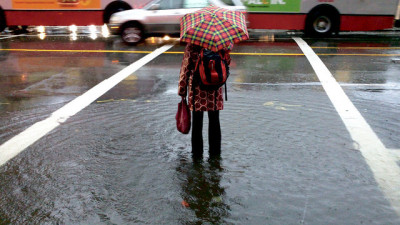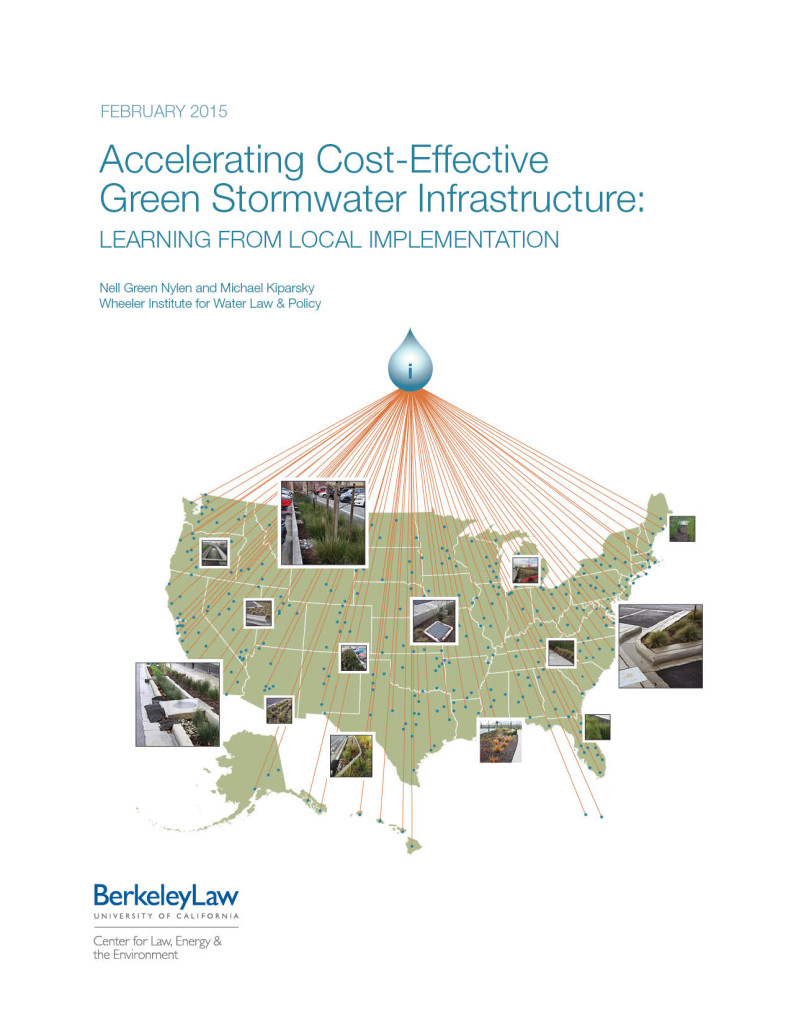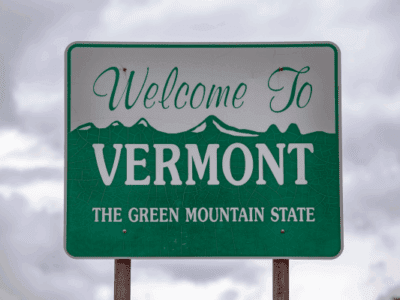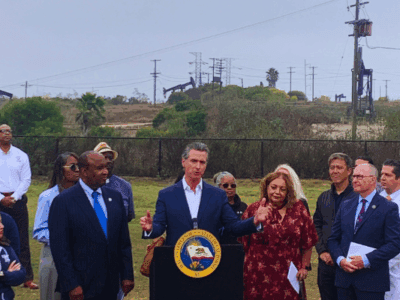Accelerating Cost-Effective Green Stormwater Infrastructure: Learning from Local Implementation
A new Berkeley Law report
California decision makers focused on responding to the current drought might question whether stormwater deserves a slice of their attention right now. Although it might be tempting to relegate stormwater planning, management decisions, and infrastructure improvements to a back burner until drought concerns cool off, doing so would be counterproductive.
Below, I explain why stormwater management is relevant during a drought and provide some brief background on green stormwater infrastructure (GSI) before introducing our report.
Stormwater management is always relevant

Stormwater is not simply a “wet year” concern. Variability is a central feature of California’s climate. Most precipitation arrives in a few short bursts between November and March. As the past several months have illustrated, intense precipitation events can occur in the midst of droughts. While 98% of the state remains in moderate to exceptional drought, the weather has seesawed between extremely dry and drenchingly wet, with atmospheric river storms pounding large areas of the state in December and early February.
Stormwater is an underutilized resource that can moderate drought impacts on local water supply. Although the details of future climate change impacts in California aren’t known, some things are clear. More precipitation will fall as rain instead of snow, and the snow that does fall will melt sooner, exacerbating water supply concerns. A stormwater management approach that treats runoff as a resource can help make local water supplies more resilient, buffering communities from the worst impacts of drought. For example, centralized or distributed stormwater infiltration helps recharge groundwater, a crucial source of water supply during dry periods. On a shorter time frame and smaller scale, rainwater harvested in rain barrels or cisterns can also boost resiliency.
To achieve community and regulatory goals, stormwater management must be an ongoing priority. Stormwater issues are not going away. Ineffective stormwater management is a serious problem nationwide. Conventional strategies based around “gray” collection and conveyance systems—networks of gutters, storm drains, and sewers—have not solved persistent stormwater problems. Instead they have shifted, and in many cases exacerbated, the impacts of stormwater runoff, trading urban flooding for pollution and hydromodification of nearby rivers, streams, lakes, and estuaries. In response, state and federal authorities that implement the Clean Water Act are beginning to hold stormwater discharged into local waters to more stringent standards. Many tools are now available to stormwater managers, but planning and implementing an effective stormwater management approach that meets community and regulatory goals takes sustained commitment.
GSI is a critical tool for managing urban runoff and achieving other goals
Communities searching for cost-effective solutions to their stormwater woes are increasingly recognizing the benefits of a more holistic management approach that employs a locally tailored mix of stormwater control measures, including GSI. Well-implemented GSI keeps stormwater local. It works by infiltrating or evaporating precipitation where it falls or capturing it for later use. The primary goal is to minimize the quantity and maximize the quality of urban runoff that flows to local waters. GSI includes a range of techniques, from bioretention systems (like rain gardens and vegetated swales) to green roofs, permeable pavements, infiltration trenches, and rain barrels.

Thoughtfully planned and executed GSI can have multiple benefits, helping local governments “make the most of limited public dollars and achieve multiple goals with a single investment.” In addition to improved water quality and Clean Water Act compliance, GSI can help communities achieve other social, public health, economic, and environmental benefits—from flood control and groundwater recharge to enhanced community aesthetics, wildlife habitat improvements, and better air quality.
How our report fits in…
Today, the Wheeler Institute for Water Law & Policy at Berkeley Law’s Center for Law, Energy & the Environment (CLEE) is releasing the report Accelerating Cost-Effective Green Stormwater Infrastructure: Learning from Local Implementation.
Our argument is a simple one: GSI is a critical tool for solving stormwater management challenges. However, it is evolving technology with inconsistent performance and uncertain costs. Addressing knowledge gaps by enhancing learning from local implementation efforts would enable communities to reap the benefits of affordable and effective GSI more quickly.
The EPA and state water quality authorities are already beginning to require GSI in some stormwater permits and combined sewer overflow (CSO) consent decrees. A natural extension would be to add or expand associated monitoring and reporting requirements, which can serve the dual functions of facilitating collective learning and demonstrating Clean Water Act compliance.
Our report outlines key actions regulators can take to drive GSI information collection and sharing. They can:
- Incentivize and highlight the importance of voluntary GSI monitoring and data contributions to the International Stormwater Best Management Practices Database (ISBMPD).
- Identify quantitative and qualitative GSI monitoring priorities at the national, regional, and watershed level.
- Adopt standardized GSI monitoring and reporting protocols and guidance.
- Attach specific monitoring and reporting requirements to GSI required by National Pollutant Discharge Elimination System (NPDES) permits and consent decrees. Some requirements would be broadly applicable (e.g., context, cost, maintenance, and qualitative performance data and lessons learned). However, a limited subset of GSI installations (consistent with the priorities identified in Action 2) would also require quantitative performance monitoring.
- Capture required GSI monitoring data in the ISBMPD. This could involve requiring individual implementers to submit data directly to the ISBMPD, collecting information first in state or regional databases that regularly feed accumulated data into the ISBMPD, or coordinating data submission with implementation of the NPDES Electronic Reporting Rule by redesigning the NPDES Integrated Compliance Information System to facilitate carryover of monitoring data to the ISBMPD.
- Feed water-quality related GSI monitoring data into the National Stormwater Quality Database (NSQD).
- Prioritize ongoing support for quantitative GSI performance monitoring, database upkeep, and timely meta-analysis of accumulated monitoring data.
Stormwater carries with it both challenges and opportunities. We hope regulators and stormwater managers alike will embrace the opportunities to grow the collective GSI knowledge base that are inherent in each instance of local implementation. These actions would accelerate cost-effective GSI and, ultimately, progress toward the end goals of clean water and vibrant, healthy communities.








Reader Comments